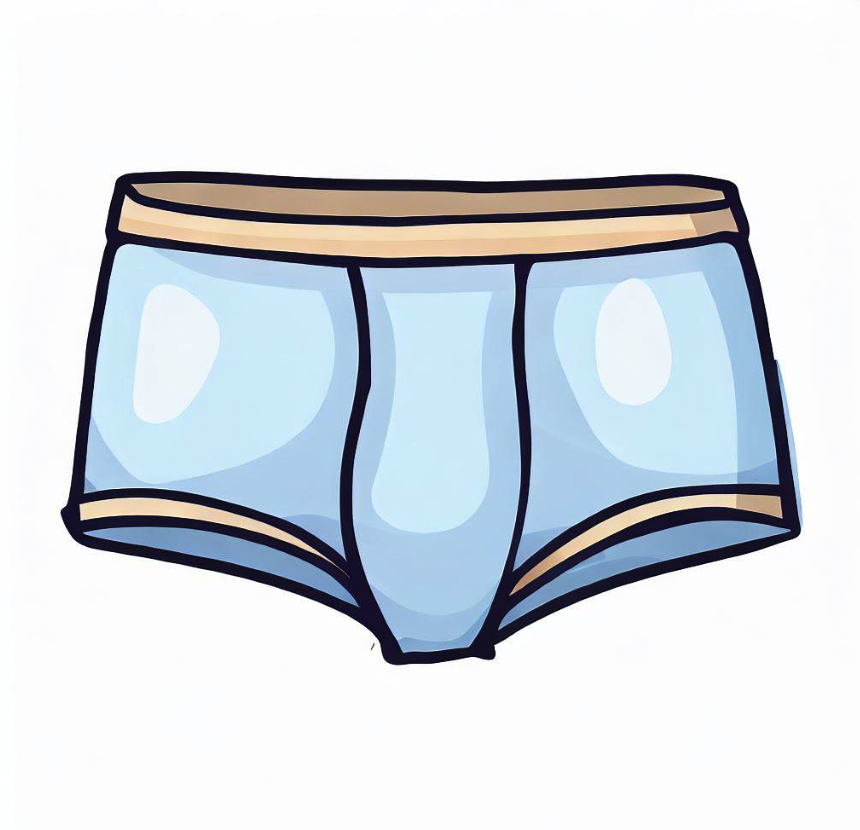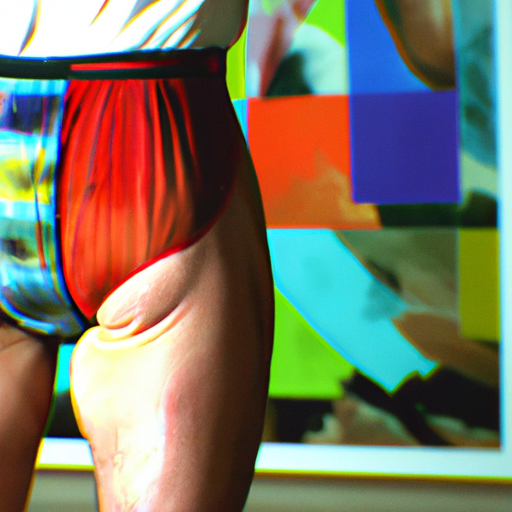Underwear is an essential garment that has been worn for centuries. Over the years, various styles and designs have emerged, and each one has its unique name.
This article provides a comprehensive guide to underwear names, including women’s and men’s underwear styles, popular brands, old-fashioned underwear names, and the history of underwear.
Women’s Underwear Style Names
Briefs
A classic style that provides full coverage, briefs come in various rises and are often made from comfortable, stretchy fabrics.
Tanga
This style features minimal back coverage and narrow side panels, offering a balance between a bikini and a thong.
Cheeky
Cheeky underwear provides moderate coverage with a sexy, flirty cut that exposes a little more of the buttocks than a traditional brief.
Hipster
With a low rise and wide side panels, hipster underwear sits on the hips, offering full coverage in a modern silhouette.
Thong
Designed with minimal back coverage and a thin waistband, thongs eliminate visible panty lines and offer a barely-there feel.
G-String
Similar to a thong, a G-string provides even less coverage with a thin, string-like waistband and a small triangle of fabric in the front.
High-Waisted
Offering a retro look, high-waisted underwear sits at the natural waistline, providing full coverage and a slimming effect.
Boyshorts
Inspired by men’s briefs, boyshorts provide full coverage with a low leg line and a sporty, comfortable fit.
Bikini
This style features moderate coverage with a lower rise and narrower side panels than a traditional brief.
French Cut
French cut underwear has high-cut leg openings, accentuating the legs and offering a comfortable, full-coverage fit.
Control Briefs
Designed to smooth and shape the body, control briefs feature built-in support panels for added structure and comfort.
Men’s Underwear Style Names
Briefs
A classic, supportive style with a high cut on the leg and a snug fit around the waist.
Boxer Briefs
Offering the best of both worlds, boxer briefs provide the support of briefs and the coverage of boxers.
 18
18
Boxers
Loose-fitting and comfortable, boxers provide minimal support but maximum breathability.
Trunks
A hybrid between briefs and boxer briefs, trunks have a shorter leg length and a square-cut appearance.
Thongs
Similar to women’s thongs, men’s thongs offer minimal coverage and support, with a thin waistband and a pouch for the genitals.
Jockstraps
Designed for athletic support, jockstraps feature a pouch for the genitals and elastic bands that wrap around the buttocks.
Long Johns
Full-length, fitted underwear typically worn in colder weather for added warmth and insulation.
Compression Shorts
Often worn by athletes, compression shorts provide support and help improve blood flow during physical activities.
Underwear Brands
Calvin Klein
Known for its minimalist and modern designs, Calvin Klein is a high-end brand offering premium quality underwear for both men and women.
Its iconic logo waistband has become a symbol of luxury and sophistication.
Victoria’s Secret
A leading women’s lingerie and underwear brand, Victoria’s Secret is synonymous with feminine, sexy styles.
The brand offers a wide range of underwear, from comfortable everyday basics to luxurious, intricate designs.
Hanes
A popular brand known for its affordable, comfortable, and durable underwear, Hanes offers a wide selection of styles for both men and women.
The brand focuses on providing functional, everyday basics made from quality materials.
Fruit of the Loom
Established in 1851, Fruit of the Loom is a well-known brand offering budget-friendly, quality underwear for men, women, and children.
Known for their comfortable fit and durable fabrics, their products are a staple in many households.
Tommy Hilfiger
A globally recognized brand, Tommy Hilfiger offers underwear with a classic, preppy aesthetic.
Their products are known for their quality, style, and comfort, catering to both men and women.
Jockey
Founded in 1876, Jockey is a longstanding brand specializing in underwear and activewear.
Known for its innovative designs and commitment to quality, Jockey offers a wide range of styles for both men and women.
Under Armour
A prominent sportswear brand, Under Armour also offers a range of performance underwear for men and women.
Their products are designed with moisture-wicking, breathable fabrics to keep wearers comfortable during physical activities.
Adidas
A global sportswear brand, Adidas offers athletic underwear designed for comfort and performance.
Their products feature moisture-wicking fabrics and ergonomic designs, catering to both men and women.
Nike
Known for its innovative sportswear, Nike also offers a range of athletic underwear for men and women.
Their products feature moisture-wicking materials and comfortable, supportive designs for optimal performance.
Puma
A popular sportswear brand, Puma offers a selection of athletic underwear for men and women.
Their products are designed for comfort and performance, featuring moisture-wicking fabrics and a variety of styles.
SAXX
A men’s underwear brand, SAXX is known for its innovative designs and focus on comfort.
Their patented BallPark Pouch technology offers additional support and chafe-free comfort for active wearers.
MeUndies
A direct-to-consumer brand, MeUndies offers comfortable, stylish underwear for both men and women.
Known for their fun prints and soft fabrics, the brand emphasizes comfort and sustainability.
Emporio Armani
A luxury fashion brand, Emporio Armani offers stylish and sophisticated underwear for men and women.
Their products are known for their high-quality materials, elegant designs, and attention to detail.
Hugo Boss
A high-end fashion brand, Hugo Boss offers a range of underwear for men and women, featuring classic styles, premium materials, and a focus on comfort and fit.
Ralph Lauren
A renowned fashion brand, Ralph Lauren offers a selection of underwear for men and women. Known for their classic, preppy designs, their products are made from high-quality materials for comfort and durability.
History of Underwear
Ancient Egyptian and Greek Underwear
Loincloths made from linen or leather were commonly worn by men and women in ancient Egypt and Greece.
Egyptian men would wrap the cloth around their waist, while women would wear a kalasiris, a simple linen dress, as underwear.
In ancient Greece, men and women both wore a type of loincloth called a perizoma.
Medieval Underwear
During the Middle Ages, women wore chemises, which were loose, sleeveless garments made of linen or cotton.
Men wore braies, which were loose-fitting trousers made from linen or other fabrics.
These undergarments provided a layer of protection between the body and outer clothing.
18th and 19th Century Underwear
In the 18th and 19th centuries, corsets became increasingly popular among women as a way to shape their torsos and provide support.
Men transitioned from knee-length to ankle-length drawers, which were often made from linen or cotton.
Women’s undergarments also evolved, with petticoats, bloomers, and chemises providing modesty and comfort under dresses and skirts.
20th Century Underwear
The 20th century saw significant changes in underwear styles.
In the 1930s, men’s briefs were introduced, offering a more supportive and comfortable alternative to the traditional boxer shorts.
Women’s underwear also evolved, with new styles such as bikinis, thongs, and boyshorts gaining popularity.
Synthetic fabrics like nylon and polyester were introduced, providing additional comfort and durability.
Modern Underwear Trends
Today, underwear is designed with a focus on comfort, function, and personal expression.
A wide variety of styles, materials, and designs are available for both men and women.
Seamless, moisture-wicking, and breathable fabrics have become increasingly popular, providing optimal comfort for daily wear or athletic activities.
Underwear styles continue to evolve, with new trends emerging to cater to diverse preferences and needs.
Old-Fashioned Underwear Names
Bloomers
Loose-fitting, knee-length undergarments worn by women in the 19th century.
Chemises
A loose, sleeveless garment that acted as a precursor to the modern slip, worn by women underneath their dresses.
Drawers
An early form of underwear for both men and women, consisting of two separate legs connected at the waist.
Corsets
A tight-fitting undergarment designed to shape the torso and provide support, often featuring boning and lacing.
Garters
Used to hold up stockings, garters were elastic bands worn around the thigh or waist.
Petticoats
A lightweight, flared undergarment worn by women beneath skirts or dresses to create volume and provide modesty.

FAQs – Underwear Names
How has underwear evolved over the year?
History of Underwear:
- Ancient Egyptian and Greek Underwear: In ancient times, loincloths made from linen or leather were commonly worn by both men and women.
- Medieval Underwear: The Middle Ages saw the introduction of the chemise for women and braies (a type of loose-fitting trousers) for men.
- 18th and 19th Century Underwear: This period marked the widespread use of corsets for women and the transition from knee-length to ankle-length drawers for men.
- 20th Century Underwear: The 20th century brought significant changes to underwear styles, including the popularization of briefs and boxer shorts for men and various styles of women’s underwear, such as bikinis and thongs.
- Modern Underwear Trends: Today’s underwear is characterized by a wide variety of styles, materials, and designs, with a focus on comfort, function, and personal expression.
What are the main differences between men’s and women’s underwear styles?
Men’s underwear styles generally focus on providing support and comfort for the male anatomy, with options such as briefs, boxer briefs, boxers, trunks, and jockstraps.
Women’s underwear styles come in a wider variety, offering different levels of coverage and support, such as briefs, bikinis, hipsters, thongs, and boyshorts.
Both men’s and women’s underwear styles have evolved to cater to various preferences and needs.
How do I choose the right underwear style for my body type and lifestyle?
When choosing underwear, consider factors such as comfort, fit, support, and personal preferences.
For daily wear, opt for styles that provide a comfortable fit and appropriate coverage.
For athletic activities, consider moisture-wicking and breathable materials that provide support and prevent chafing.
Experiment with different styles and materials to find what works best for your body and lifestyle.
How do I know my correct underwear size?
To find your correct underwear size, measure your waist and hip circumference.
Compare your measurements to the brand’s size chart, which is typically available on their website or product packaging.
Keep in mind that sizing may vary between brands, so always refer to the specific size chart provided.
How often should I replace my underwear?
The lifespan of underwear depends on factors such as quality, frequency of wear, and proper care.
As a general guideline, consider replacing your underwear every 6-12 months, or when you notice signs of wear such as fraying, loss of elasticity, or holes.
How should I care for my underwear to ensure longevity?
To extend the life of your underwear, follow the care instructions provided on the garment’s label.
Generally, it’s best to wash underwear in cold water using a gentle detergent and either air dry or tumble dry on low heat.
Avoid using bleach or fabric softeners, as they can damage the fabric and elasticity.
Are there eco-friendly and sustainable underwear options available?
Yes, many brands now offer eco-friendly and sustainable underwear options.
Look for products made from organic or sustainable materials such as organic cotton, bamboo, or recycled fabrics.
Additionally, some brands prioritize ethical manufacturing practices and reduced environmental impact throughout the production process.
What are some common materials used in underwear manufacturing?
Common materials used in underwear manufacturing include cotton, modal, bamboo, silk, nylon, polyester, and spandex.
Each material has its unique properties, such as breathability, moisture-wicking, softness, and stretch. Consider your personal preferences and specific needs when choosing underwear made from different materials.
Can I wear compression shorts as underwear?
Compression shorts can be worn as underwear, particularly during athletic activities.
They provide support and help improve blood flow, making them a suitable option for workouts and sports.
However, for daily wear, you may prefer the comfort and breathability of traditional underwear styles.
Conclusion
Underwear is a necessary garment that has evolved over the centuries. From ancient Egyptian and Greek times to modern-day trends, various styles and designs have emerged.
Understanding the different styles and brands of underwear can help you find the perfect fit for your body and lifestyle.
Whether you prefer the support of briefs, the freedom of boxers, or the seamless look of a thong, there’s a style out there for everyone.
Embrace the rich history and diversity of underwear as you select the pieces that best suit your needs and preferences.


